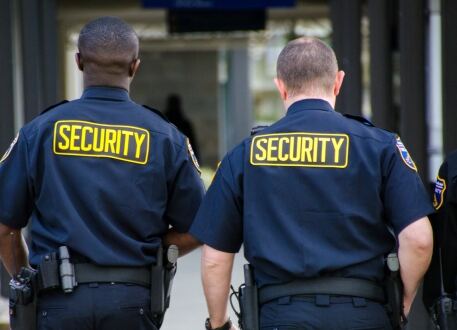
Security Personal Protective Equipment (PPE).
Security workwear refers to the clothing and gear worn by security personnel, including security guards, officers, and professionals in various security-related roles. The primary purpose of security workwear is to provide a professional appearance, ensure the safety and security of individuals and property, and help security personnel perform their duties effectively. The specific requirements for security workwear can vary depending on the employer, the nature of the security assignment, and local regulations.
Here are common elements and features of security workwear:
Uniforms: Security personnel often wear uniforms that distinguish them from the general public and help them project a professional image. Security uniforms can include shirts, pants, skirts, blazers, vests, or jumpsuits, depending on the employer's dress code.
Badges and Identification: Security officers typically wear badges or identification cards prominently displayed on their uniforms to indicate their authority and affiliation with a security company or organization.
Emblems and Patches: Uniforms may feature emblems, patches, or logos that represent the security organization or company.
Footwear: Comfortable and durable footwear, such as security boots or shoes, is essential for long hours of standing and patrolling. These shoes often have non-slip soles for safety.
Outerwear: Security personnel may wear weather-appropriate outerwear, such as security jackets or raincoats, to protect against the elements while on duty.
Hats or Caps: Many security uniforms include hats or caps with the security organization's logo or emblem. These can provide protection from the sun and add to the uniform's professional appearance.
Belts and Accessories: Duty belts are often worn to carry essential security equipment, such as handcuffs, batons, flashlights, radios, and keys. These belts may also include a badge holder and other accessories.
Body Armor: In situations where security personnel may face higher risks, body armor or bulletproof vests may be part of the workwear for added protection.
Gloves: Depending on the security assignment, gloves may be worn to protect the hands or for specific tasks such as pat-downs or crowd control.
High-Visibility Gear: Security personnel working in traffic control or areas where visibility is crucial may wear high-visibility vests or clothing.
Communication Devices: Radios or earpieces for communication with colleagues and control centers may be part of the security workwear.
Personal Protective Equipment (PPE): Depending on the security environment, PPE like safety glasses, ear protection, or respiratory protection may be required.
Cold-Weather Gear: In cold climates, security personnel may have winter workwear like insulated jackets and thermal undergarments.
Identification Cards and Passes: Security personnel may wear identification cards, access control passes, or keycards on lanyards for easy access and identification.
Traffic Control Gear: Security personnel involved in traffic control may wear reflective vests and use stop signs or traffic wands to direct vehicles.
The specific dress code and requirements for security workwear can vary widely based on the employer's policies, the nature of the security role (e.g., event security, private security, airport security), and local regulations. The goal is to have a professional appearance while ensuring the safety and security of the area or property being protected.